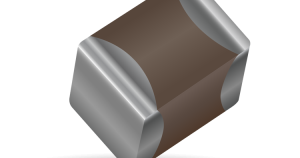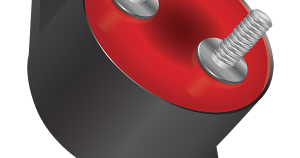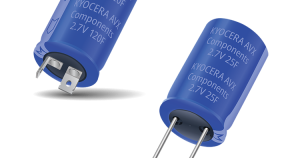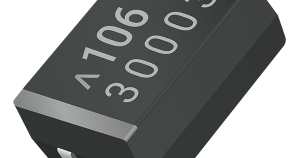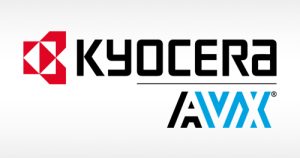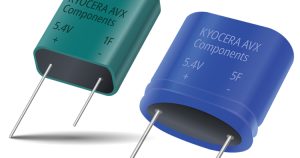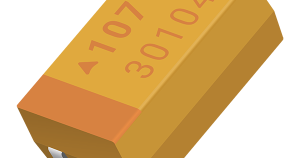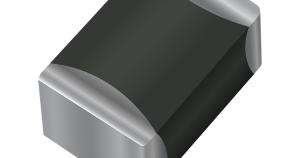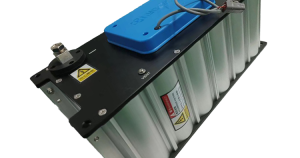The new NP0/C0G and X7R KGK Series Class X1/Y2 and KGH Series Class X2 safety-certified capacitors deliver high reliability, stability, and capacitance in small case sizes and feature a slate of global certifications that enables broad employment in consumer and industrial devices. FOUNTAIN INN, S.C. (November 16, 2023) – KYOCERA AVX, a leading global manufacturer of advanced electronic components engineered to accelerate technological innovation and build a better future, has expanded its extensive portfolio of commercial surface-mount MLCCs with the release of its first safety-certified MLCCs, the new Class X1/Y2 KGK Series and Class X2 KGH Series. Class-X and Class-Y safety-certified capacitors are designed to protect against surges and transient and provide EMI filtering AC line filtering applications. Class-X safety
News / Events / Press
The new HP Series filters deliver reliable and repeatable high-frequency performance in space-constrained microwave and RF applications including wireless LANs, satellite TV receivers, vehicle location systems, base stations, and ground and mobile communications systems. FOUNTAIN INN, S.C. (November 14, 2023) – KYOCERA AVX, a leading global manufacturer of advanced electronic components engineered to accelerate technological innovation and build a better future, has released a new series of miniature high-pass thin-film filters engineered to provide excellent high-frequency performance in a variety of space constrained microwave and RF applications in the telecommunications, automotive, consumer electronics, and military markets. The new HP Series high-pass thin-film filters are based on proven multilayer integrated thin-film technology that enables the quick adjustment of RF parameters and
Controlled Self-Healing of Power Film Capacitors Written By: Kevin Cho Abstract: In high voltage, high energy applications such as electric trains and solar power grids, the safety and reliability of capacitors are paramount. Catastrophic failures and associated explosions or fires are unacceptable. Just as importantly, service lifetime and predictability for optimizing up-time are critical to the product’s success. Film capacitors with controlled self-healing are the ideal solution to these challenges and can be obtained in various sizes and technical specifications. This whitepaper discusses the distinctions between aluminum electrolytic and metal film capacitors before considering some distinct advantages of film capacitors and the self-healing properties of metallized film capacitors.
Safety Considerations for Acetonitrile SuperCapacitors Written By: Akihiro Kado Abstract: Advancements in SuperCapacitor design and manufacturing have made them a mainstay component in power supplies and backup systems that require high power density output. SuperCapacitors have now become commonplace components in many areas of modern electronic design. They bridge an important gap between batteries – used for high density energy storage, and electronic capacitors – for local power supply stabilization and decoupling. SuperCapacitors offer the unique ability to provide large amounts of power for short periods of time. For this reason, they have found a home in applications such as electric vehicles, uninterruptible power supplies, and data storage devices. A wide variety of SuperCapacitor structures and materials have been developed,
LP Series MLO low-pass filters, HF Series MLO high-pass filters, and BP Series MLO band-pass filters consistently outperform standard silicon and ceramic filters and help RF design engineers satisfy sustained market demand for smaller, more capable electronics. FOUNTAIN INN, S.C. (October 31st, 2023) – KYOCERA AVX, a leading global manufacturer of advanced electronic components engineered to accelerate technological innovation and build a better future, offers three multilayer organic (MLO) filter series that are both designed and field proven to deliver best-in-class performance in a variety of RF applications. The LP Series MLO low-pass, HF Series MLO high-pass, and BP Series MLO band-pass filters are low-profile passive devices based on KYOCERA AVX’s patented MLO high-density interconnect technology. This technology has a
The new Gen II PrizmaCap supercapacitors deliver higher capacitance, voltage, and energy density than Gen I PrizmaCaps and exhibit higher reliability across a wider range of operating temperatures. Ideal applications extend across the medical, consumer, commercial, and industrial electronics industries. FOUNTAIN INN, S.C. (October 26th, 2023) – KYOCERA AVX, a leading global manufacturer of advanced electronic components engineered to accelerate technological innovation and build a better future, expanded its PrizmaCap line of rugged, high-capacitance, and high-reliability supercapacitors with the release of two new Gen II series. The new Gen II PrizmaCap supercapacitors, also known as prismatic electrochemical double-layer capacitors (EDLCs), deliver higher capacitance, voltage, and energy density than Gen I PrizmaCaps and exhibit higher reliability across a wider range of
Radiation Tolerance of Tantalum Polymer Capacitors Written By: Krystof Adamek Abstract: Environments rich in ionizing radiation create a particularly difficult functional challenge for electronic components. Spacecraft, nuclear reactors, particle accelerators, and hardened military equipment (to name a few examples) demand that their electrical systems operate correctly, even in the presence of high energy particles, photons, electrons, neutrons, protons, and the like. Such radiation adversely affects electronics in two ways: fundamentally damaging the constituent materials, and creating transient electrical signals that can impede functionality. Mechanisms of radiation induced failure in semiconductors and other active devices have been well-studied, and methods for overcoming or preventing these failures have been developed. Passive devices like inductors, resistors, and capacitors, on the other hand, are
KYOCERA AVX contributed several components to the Pragyaan lunar rover, including stacked TCH Series surface-mount capacitors that became the first polymer capacitors to ever be used in a space mission. FOUNTAIN INN, S.C. (October 24, 2023) – KYOCERA AVX, a leading global manufacturer of advanced electronic components engineered to accelerate technological innovation and build a better future, is proud to announce that it provided several key components for the Indian Space Research Organization’s (ISRO’s) historic Chandrayaan-3 lunar mission. On August 23, 2023, the Chandrayaan-3 mission’s Vikram lander cemented India’s status as the first country to soft-land a spacecraft near the South Pole of the Moon and the fourth to successfully achieve a lunar landing. The lander also deployed the ISRO’s
Webinar: Succeeding in Device Certification: How to Overcome Failure Thursday, October 26th, 2023 | 11:00 AM EDT Device certification is a critical step in bringing your innovative products to market, ensuring their safety, reliability, and compliance with industry standards. However, it’s no secret that navigating the certification process can be a daunting task, with many devices encountering unexpected roadblocks along the way. In this informative webinar, we will delve deep into the world of device certification and shine a spotlight on the six most common factors behind certification failures, especially concerning antenna considerations. By understanding these key challenges, you’ll gain valuable insights and strategies to enhance your device’s chances of a successful certification journey. Join us in this webinar
The asset transfer acquisition includes Bliley’s business, equipment, people, and IP and will help KYOCERA AVX better serve sophisticated customers in the demanding military, aerospace, and defense markets. FOUNTAIN INN, S.C. (October 2nd, 2023) – KYOCERA AVX, a leading global manufacturer of advanced electronic components engineered to accelerate technological innovation and build a better future, is acquiring assets of Bliley Technologies, a worldwide leader in the design and development of innovative, low-noise frequency control products with more than 65 years of space heritage in low Earth orbit (LEO) and geostationary equatorial orbit (GEO) applications. The asset transfer acquisition will bring Bliley’s equipment, people, and IP under the KYOCERA AVX umbrella and allow KYOCERA AVX to produce the same high-quality electronic
This prestigious award marks the fifth consecutive year that TTI Asia has recognized KYOCERA AVX for faithfully fulfilling critical quality performance metrics designed to build stronger partnerships, improve quality performance, and provide excellent customer service. FOUNTAIN INN, S.C. (September 25, 2023) – KYOCERA AVX, a leading global manufacturer of advanced electronic components engineered to accelerate technological innovation and build a better future, has earned a prestigious Platinum 2022 TTI Asia Supplier Excellence Award — the highest possible level of recognition. Bestowed by TTI, Inc., the world’s leading authorized specialty distributor of interconnect, passive, and electromechanical (IP&E) components, the Platinum 2022 TTI Asia Supplier Excellence Award celebrates KYOCERA AVX for faithfully fulfilling critical quality performance metrics designed to elevate supplier and
The new 9296-11X Series STRIPT™ vertical poke-home through-board contacts offer valuable cost and space savings, support design flexibility, and reliably terminate 12–18AWG solid and stranded wire. Ideal applications include machine controls, building controls, LED lighting, and home appliances. FOUNTAIN INN, S.C. (September 13, 2023) – KYOCERA AVX, a leading global manufacturer of advanced electronic components engineered to accelerate technological innovation and build a better future, has released the new 9296-11X Series STRIPT™ vertical poke-home through-board contacts for 12–18AWG wire. The new 9296-11X Series vertical through-board contacts further expand the company’s portfolio of user-friendly poke-home contacts and connectors. This addition brings the portfolio total to 10 series, two of which — this series and 9296-000 Series contacts — can now support
Advantages of SuperCapacitors for Power Constrained Backup Written By: Johnson Jiang Abstract: In most energy storage scenarios, the tradeoffs between power density and energy density quickly come to the foreground. This is best illustrated in the automotive industry, where power density directly translates to acceleration and driving performance, while energy density translates to the total range achievable on a tank of gas or, for an electric vehicle, on a single recharge cycle. This is true across almost every application, from wearable electronics to microgrid power networks on a college campus. This whitepaper from KYOCERA AVX will explore the advantages of SuperCapacitors, circuit level, uninterruptable power, and microgrid considerations, and the benefits that make them a more reliable option than traditional
Failure Mode Comparison of Tantalum and Niobium Oxide Capacitors Written By: George Zhang Abstract: The automotive industry has become highly dependent on advanced sensing and computing. Starting in the mid-twentieth century, the development of dense, reliable, and stable capacitors has been instrumental in advancing high speed computing and high performance electronics. The demands on these capacitors have increased substantially, requiring high-temperature tolerance, harsh environmental reliability, and ever-decreasing parasitic parameters such as equivalent series resistance (ESR) and inductance (ESL). Tantalum and niobium oxide capacitors have been two of the most notable contenders to meet these requirements. Though similar in construction, their failure modes are nuanced and require a careful understanding to ensure a successful design for a particular application.
The Principles of Varistor Selection Written By: Teddy Won Abstract: A varistor is an electronic component used to suppress transient voltages to protect electronic circuits. The behavior of varistors in a circuit is similar to TVS diodes, but they are entirely different in design, materials, and construction. There are many kinds of varistors on the market suitable for various applications, making choosing the right one to protect a given circuit challenging. KYOCERA AVX multilayer varistors, with a unique high-energy multilayer construction, provide state-of-the-art overvoltage circuit protection and protection from voltage transients caused by ESD, inductive switching, automotive-related transients, NEMP, lighting, etc. KYOCERA AVX multilayer varistors also provide EMI/RFI filtering in the off-state, which can replace the need for additional EMC
The new supercapacitor modules exhibit very high capacitance, very low ESR, high efficiency, high power density, and excellent pulse power handling characteristics and are ideal for hold-up, energy harvesting, and pulse power applications in the industrial, energy, telecommunications, automotive, transportation, and medical industries. FOUNTAIN INN, S.C. (August 15, 2023) – KYOCERA AVX, a leading global manufacturer of advanced electronic components engineered to accelerate technological innovation and build a better future, released the new SCM Series double-layer, series-connected electrochemical supercapacitor modules. The new SCM Series series-connected supercapacitor modules can be used by themselves or in conjunction with primary or secondary batteries to extend battery life and backup time or provide instantaneous power pulses in hold-up, energy harvesting, and pulse power applications
